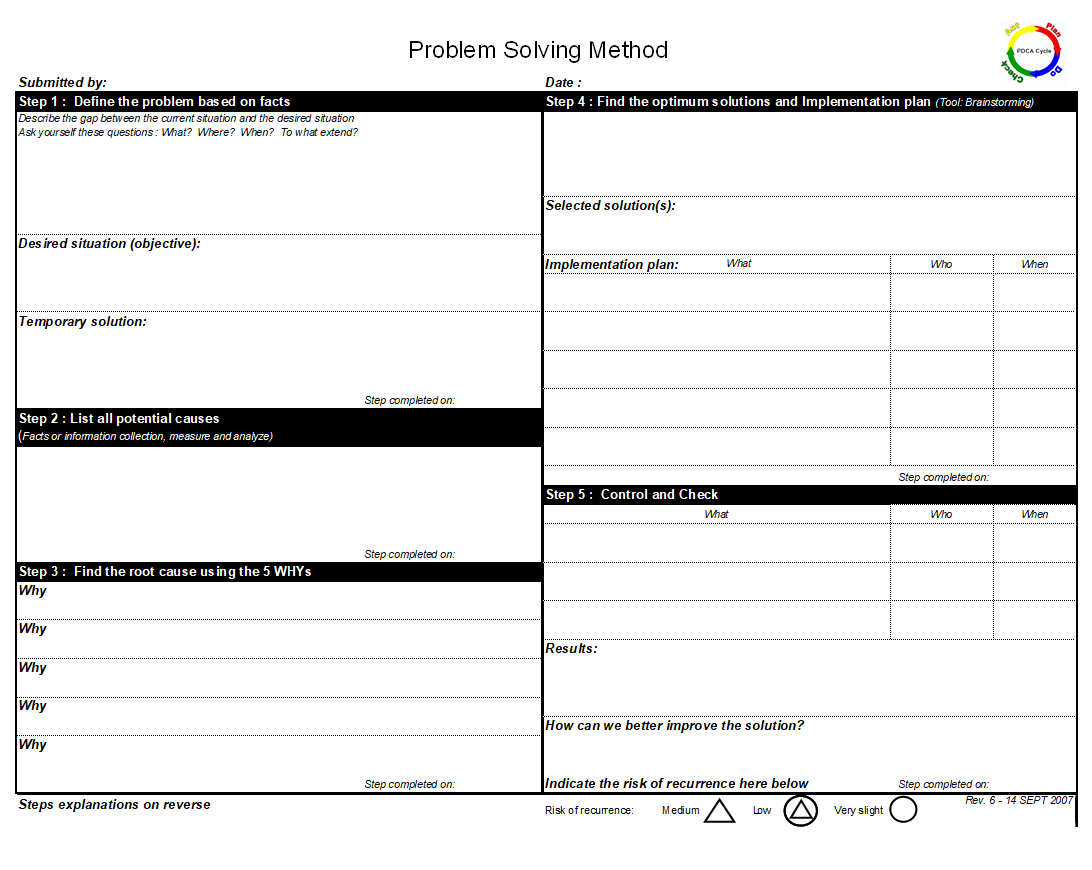[Post by Chuck Krugh, January 13, 2023]
A critical component of our Business Operating System (BOS) is problem solving – finding the Root Cause and taking the necessary Corrective Actions to keep the problem from happening again. Practically speaking, it is a process that is used more often than you realize. You use it in your personal life all of the time, but you likely never think about the process. So let’s talk about it.
Root Cause and Corrective Action (RCCA) is a process to organize the way in which we seek to understand what happened when the output isn’t matching our expectations. I said above that you use this at home more than you think, so let me give you an example.
As it is winter, most of us are working from dark to dark. When you get home from work, you turn on the light switch. You expect the light to turn on. But what do you do if it doesn’t? I bet, like me, you switch the lights on and off to validate the problem and then think, what the heck!! Then, you start running through all the potential causes: bulb burnt out, circuit breaker popped in the electrical panel. Is anything else in the house working? Do the neighbors have power and did I pay the bill? As soon as you start asking these questions, you’re applying problem solving.
In that moment, you’re asking “WHY is this happening?” Then you decide to try a fix – maybe a temporary solution – to remedy the light situation and allow you to see. You turn on another light in the house to get out of the dark. By applying this temporary solution, you have light and can continue to investigate “Why” the first light didn’t work. Because the second light turned on, you know you have electricity in the house; therefore, you can eliminate several of your potential “root causes” and focus in on the bulb as the most likely cause. If you change the bulb and it works, problem solved – in just one pass through the RCCA process. If it doesn’t work, then we continue to ask more “Why” questions.
You didn’t fill out a form to conduct your own RCCA at home, but you did do all the steps. Think about how many times you solve problems away from work and the process you go through – that’s the basic RCCA process.
The lighting example is straightforward because we’ve all experienced a non-working light. We’ve learned through that experience the most probable cause is usually the light bulb. At work, it can be more difficult to “see” the solution to the problems we encounter.
I see three levels of problem solving being used in our work environment. The first level, like the light bulb, is the “Go Do” – these are problems you can fix on the spot because you have experience with the problem.
The second level is the “Get Help” – these are more difficult and require help from someone else, like fixing a machine. In this category, you need a more organized, written approach to ensure we find the root cause of the problem (Why did the machine break down?) and ensure we apply the corrective action. Documenting this process creates a record of the problem and its solution so we can build that solution into future operations, like work plans for the next ship. For second-level problem solving I commonly use an A3 Problem Solving Sheet. More about that in a minute.
The third level of problem solving is the “Big Problem.” These usually occur at the company level and require special problem-solving techniques. We won’t spend much time on this level because the majority of our problems will be solved in Level 1 or 2.
One of the most simple and straightforward A3 Problem Solving Sheets is shown below. I have used the form over and over for many, many years. You may be wondering why it’s called an “A3” Problem Solving Sheet. The A3 refers to the size of the paper, something you might find on a printer. It’s about the size of the 11×17 inch paper. The paper is larger than a standard sheet so it gives you more space to work with and you can fit the complete problem-solving activity neatly on one page.
I also want to draw your attention to the PDCA mark in the upper right hand header. This form walks you through the PDCA cycle just like our Business Operating System.

My goal for this week was to introduce the problem-solving process, talk about the different levels of problem solving and show you a form that we can use to solve Level 2 problems. I’ll cover the form in more detail in my next blog.
Problem solving is an important tool at our disposal to help improve the direction of our company. We all should participate in it when we have the chance.
See you on the deckplates!
Safely Execute High-Quality Work
Chuck
President, General Dynamics Bath Iron Works
Click here to view more From the Helm blog posts.
